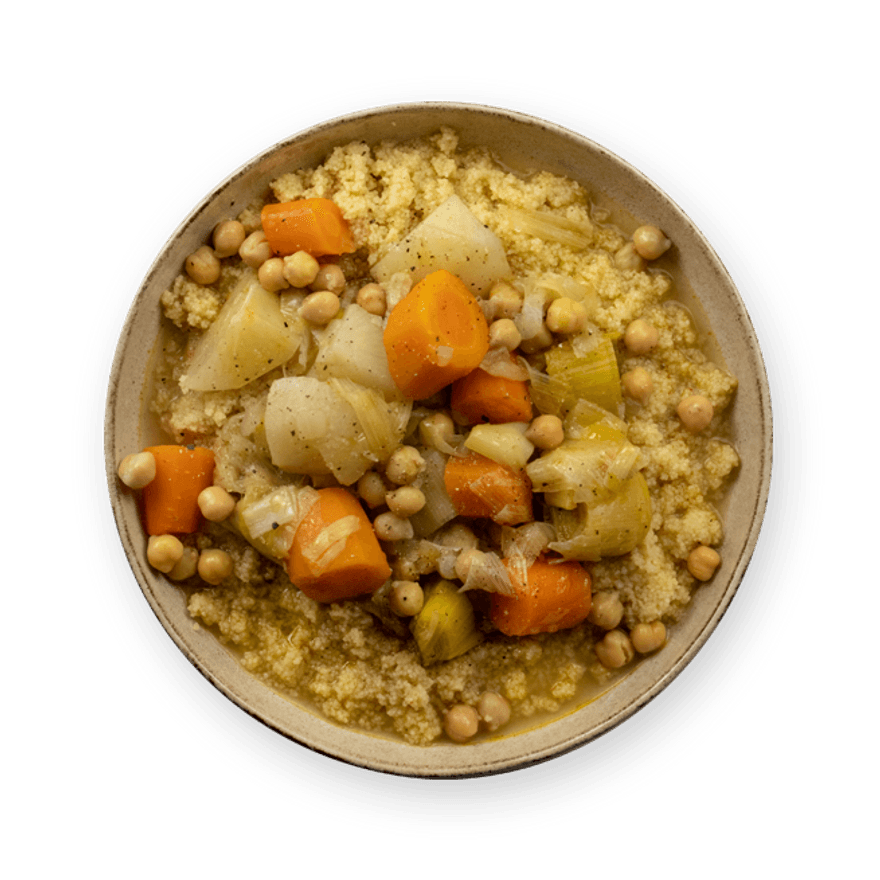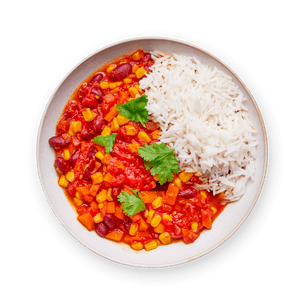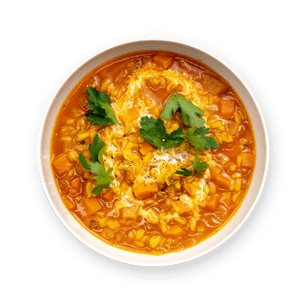Oops! 🤓
This recipe is not yet fully translated into English...
Couscous aux légumes d'hiver
131 reviewsPour les envies soudaines de couscous en plein hiver !

Ingredients
Utensils
Cookeo, Peeler
recipe



Step 1
Épluchez les légumes* et coupez-les grossièrement. Émincez les oignons. *Consultez nos tips pour cette étape






Step 2
Dans le bol du Cookeo, ajoutez un filet d'huile d’olive, le ras el hanout, les carottes, les navets, les poireaux, les oignons et la harissa. Lancez la cuisson en mode dorer pendant 5 minutes.

Step 3
Ajoutez 300 ml d’eau/personne dans le bol avec le bouillon de légumes, salez. Lancez la cuisson sous pression pendant 20 minutes.


Step 4
Après 20 minutes de cuisson, placez la semoule dans un récipient. Ajoutez un peu du bouillon du Cookeo sur la semoule (à niveau pour la recouvrir) et laissez gonfler 5 minutes dans un récipient couvert.

Step 5
Ajoutez les pois chiches rincés dans le bol du Cookeo. Lancez la cuisson sous pression pendant 3 minutes.
Step 6
Servez les légumes sur la semoule. Salez, poivrez. C'est prêt !

For a zero-waste dish, use the discarded leek stalks to make soup ! Rinse well & remove all damaged, dry & yellow parts before adding to your pot with the ingredients of your choosing.
- Camille U, Nutritionist
Personal notes
Add your own flavor!
Nutrition facts
Average estimated amount for one serving
| Energy | 483 cal. |
| Fat | 8 g |
| Carbohydrates | 79 g |
| Protein | 17 g |
| Fiber | 11 g |
Values are based on an average estimate for one serving. All nutrition information presented on Jow is intended for informational purposes only. If you have any concerns or questions about your health, please consult with a health-care professional.
On average, one serving of the recipe "Couscous aux légumes d'hiver" contains 483 Energy, 8 g of Fat, 79 g of Carbohydrates, 17 g of Protein, 11 g of Fiber.
Price per portion
| € | Nos recettes à -2 € par portion |
| €€ | Nos recettes entre 2 € et 4 € par portion |
| €€€ | Nos recettes à +4 € par portion |
Please note, the price above is dependent on your grocer and the available products in the grocery store you chose.
Scores


A Nutri-score
The Nutri-score is an indicator intended for understanding nutritional information. Recipes or products are classified from A to E according to their food composition to promote (fiber, proteins, fruits, vegetables, legumes, etc.) and foods to limit (energy, saturated fatty acids, sugars, salt, etc.).
A Green-score
The Green-score is an indicator representing the environmental impact of food products. The recipes or products are classified from A+ to F. It takes into account several factors on the pollution of air, water, oceans, soil, as well as the impacts on the biosphere. These impacts are studied throughout the product life cycle.
Retrieving reviews...








